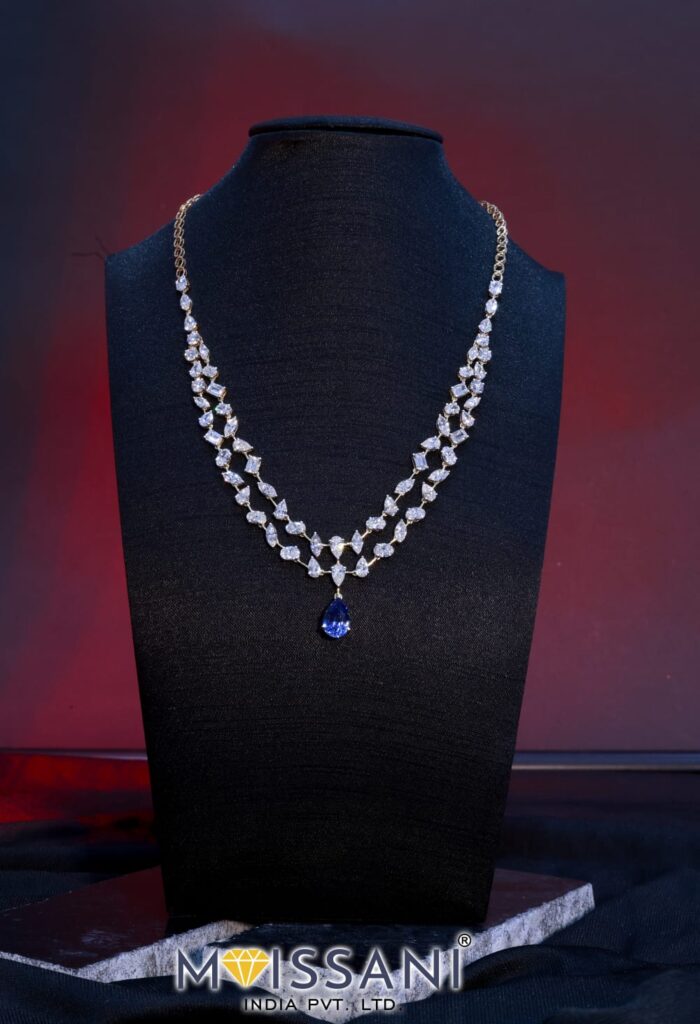The Diamond Revolution: Assessing Lab-Grown Diamond Value in 2024.
The diamond industry has experienced a seismic shift over the last decade, with lab-grown diamonds playing a central role in this transformation. While natural diamonds have long held the monopoly on luxury, lab-grown diamonds have now gained serious attention, offering a sustainable and ethical alternative without compromising beauty or quality. As we delve into 2024, it’s essential to reassess the value of lab-grown diamonds in today’s market and culture.

What Are Lab-Grown Diamonds?
Lab-grown diamonds are created using high-tech processes that replicate the conditions under which natural diamonds form. The two most common methods are High Pressure High Temperature (HPHT) and Chemical Vapor Deposition (CVD). These diamonds share the same physical, chemical, and optical properties as natural diamonds. Essentially, lab-grown diamonds are diamonds, only created in a controlled environment rather than deep within the Earth over millions of years.
Why Are Lab-Grown Diamonds Gaining Popularity?
- Ethical and Sustainable Sourcing:
One of the key reasons consumers are shifting toward lab-grown diamonds is their ethical advantage. With lab-grown diamonds, there is no concern about conflict diamonds (or blood diamonds), which are often mined in war zones and fund violence. Lab-grown diamonds offer a transparent and ethical alternative, appealing to eco-conscious buyers. - Cost-Effectiveness:
Lab-grown diamonds are significantly less expensive than their natural counterparts. In 2024, consumers can expect to pay about 30-40% less for a lab-grown diamond of the same size and quality as a natural one. This affordability has democratized diamond ownership, allowing more people to purchase high-quality stones for engagement rings, jewelry, and even investment. - Environmental Considerations:
While mining natural diamonds requires significant land disruption, energy, and water, lab-grown diamonds boast a smaller environmental footprint. Many labs use renewable energy sources and employ green manufacturing practices to minimize their impact. This aligns with the growing global demand for sustainable luxury goods.
The Market in 2024: Lab-Grown Diamonds vs. Natural Diamonds
The lab-grown diamond market continues to grow at an impressive rate. In 2024, lab-grown diamonds now account for a significant portion of global diamond sales. A key reason for this increase is consumer awareness and the mainstream acceptance of lab-grown gems.
However, one of the major debates in the industry is whether lab-grown diamonds will hold their value in the long term compared to natural diamonds. Historically, natural diamonds have been considered a form of investment, with many appreciating over time. Lab-grown diamonds, on the other hand, are still relatively new to the market, and their long-term value remains uncertain.
That said, many industry experts suggest that the current pricing gap between lab-grown and natural diamonds could narrow as lab-grown diamonds become more accepted and as technologies continue to evolve.
Lab-Grown Diamonds and Luxury Brands
In 2024, major luxury jewelry brands have begun embracing lab-grown diamonds. Brands that were once hesitant to enter this space are now including lab-grown diamonds in their collections, acknowledging the growing demand and the need for sustainable luxury. De Beers, once known for its staunch support of natural diamonds, has launched Lightbox Jewelry, a line of affordable lab-grown diamond jewelry, further cementing the acceptance of lab-grown stones.

The Emotional Value Debate
One of the traditional arguments against lab-grown diamonds has been their lack of “emotional value” compared to natural diamonds, which carry the mystique of being billions of years old. But modern consumers are shifting their perspectives. Today, many find lab-grown diamonds more appealing due to their ethical and environmental advantages, without losing the significance of what the diamond represents: love, commitment, and timelessness.
Investment in Lab-Grown Diamonds
As of 2024, lab-grown diamonds are not yet seen as traditional investment assets like natural diamonds or gold. Their resale value tends to be lower, and it’s unlikely they will appreciate significantly over time due to their growing availability and ease of production. Natural diamonds still hold the edge for consumers looking to invest in diamonds as a financial asset. However, for those who value the beauty of the stone itself and its ethical origins, lab-grown diamonds offer a beautiful proposition.

What’s Next for Lab-Grown Diamonds?
The future looks bright for lab-grown diamonds. As technology continues to advance, we can expect the quality of lab-grown diamonds to improve, while the costs of production decrease. This could lead to even more affordability, making lab-grown diamonds a go-to choice for everyday luxury as well as special occasions.
Additionally, as more people prioritize sustainability and transparency in their purchasing decisions, lab-grown diamonds are likely to become an even bigger player in the jewelry market. Their role in the evolving ethical luxury movement ensures that they are here to stay.
Conclusion
In 2024, lab-grown diamonds are more than just a trend; they are part of a broader shift in how we value luxury, ethics, and sustainability. They offer a beautiful, cost-effective, and eco-friendly alternative to natural diamonds. As the industry continues to innovate, lab-grown diamonds will likely become an increasingly prominent part of the jewelry landscape. Whether you’re buying for emotional reasons or aesthetic pleasure, the lab-grown diamond revolution is one worth watching.





